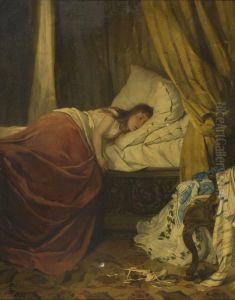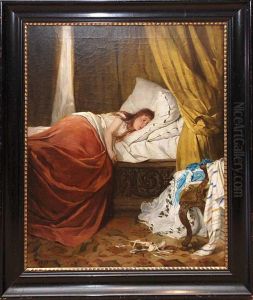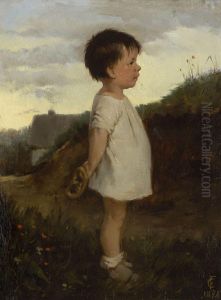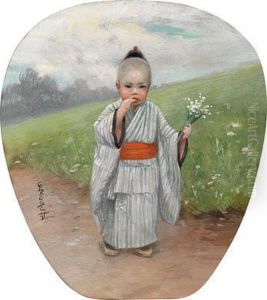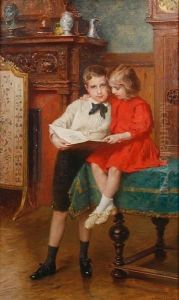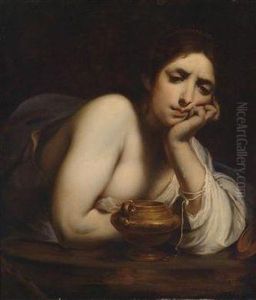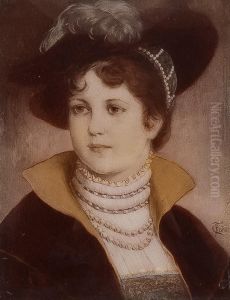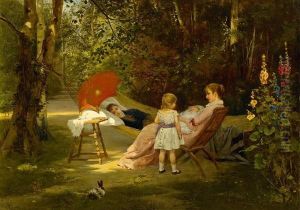Carl Froschl Paintings
Carl Froschl was an Austrian painter and graphic artist who was born in 1866 in Vienna. He is known for his genre paintings, portraits, and still lifes which often incorporated floral motifs and scenes of everyday life. Froschl's work is characterized by its detailed realism and vibrant use of color, which he used to capture the nuances of light and shadow in his compositions.
Froschl studied at the Academy of Fine Arts Vienna under the guidance of Christian Griepenkerl, a prominent figure in the academic art world of the late 19th century. His education at the Academy was traditional, focusing on the techniques and principles of academic art, which greatly influenced his early work.
After completing his studies, Carl Froschl began to establish himself as an artist in Vienna. His works were exhibited in numerous exhibitions, and he gained recognition for his ability to depict the texture and materiality of objects, making his still lifes particularly admired.
Throughout his career, Froschl remained largely committed to the academic style of painting, despite the changes in artistic trends and the emergence of modernism during his lifetime. His works did not venture into avant-garde territory, but instead, he perfected his craft within the boundaries of the style he was trained in.
Froschl's paintings were popular in his time, and he received commissions from a variety of patrons. His portraits often featured prominent members of society, and he was adept at capturing not only their likeness but also the essence of their status and personality.
Carl Froschl's contribution to Austrian art is notable for his adherence to academic standards and his mastery of realism in painting. He passed away in 1936, leaving behind a legacy of work that continues to be appreciated for its technical skill and its portrayal of the beauty in everyday objects and scenes.
